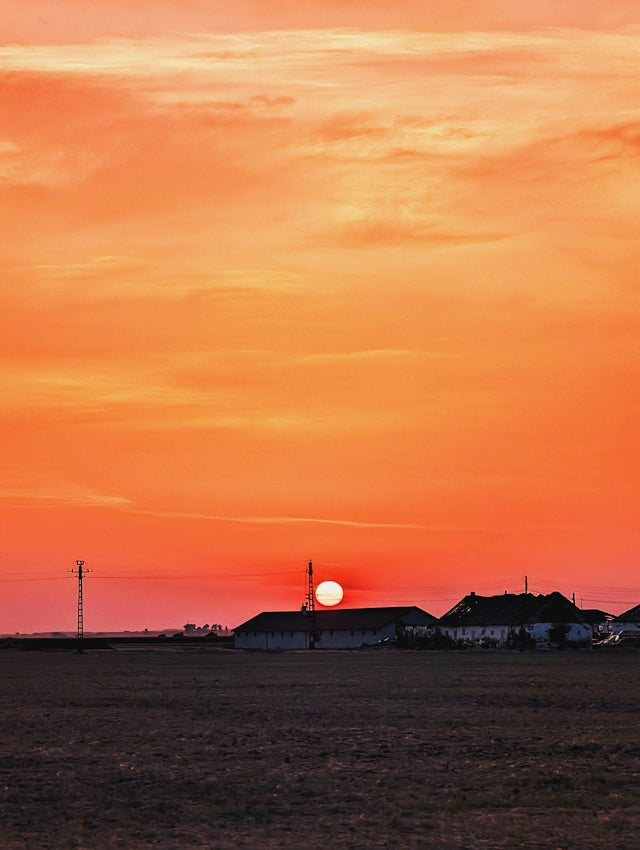How much air pollution would make you want to leave your home?

In the US, many people do live in polluted air, but not to the levels that other countries like India and China experience. We read or see photos of these shocking levels of air pollution, but until it descends on us personally (usually in the form of temporary wildfire smoke patterns), it’s hard to fathom the kinds of decisions residents in these countries face. Here are some examples:
-
A young couple in Delhi, India decided to move out of their city in order to raise their child in better air quality. "When we thought about what we can curate for our child in Delhi, the air just became such a blocker for so many of those things." (India's pollution refugees fleeing Delhi's toxic air)
-
Another couple’s 2-year old son fell ill repeatedly. "We had three air purifiers running continuously, and then I needed more," she said. They also relocated to a less polluted city.
-
Pediatricians in Delhi can’t help much: "The doctor told us winter will be difficult," according to Delhi resident Roli Shrivastava. "He just told us, 'When your kid starts coughing at night, don't even call me—just start nebulizing.'"
-
In 2021, a French court ruled in favor of a Bangladeshi man with asthma to stay in France after his lawyer argued that he risked a severe deterioration in his condition, and possibly premature death, due to the dangerous levels of pollution in his homeland. (Air pollution will lead to mass migration, say experts after landmark ruling)
Around the world, it’s been shown that increasing air pollution in one region will increase the net outmigration of that region (more people leave in search of cleaner air/healthier lives). And because we’re a social species, one person in a family or social group will likely influence others they know to move also. Moving your household has a high cost, though, and sometimes this option is not even available to unskilled workers because of their economic status.
There are several financial costs for these highly polluted areas: first, of course, is the cost of increased healthcare for its citizens and workers. Then, there is lost productivity in sick days of the workforce. Then, as workers choose to move out, it’s usually the younger, college-educated workers who choose to leave polluted places where they would be more productive, because they can afford to move economically and socially (they have more opportunities and resources to absorb the costs, even culture shock if it’s internationally). This is a “brain drain” on the area. Migration costs make it difficult for less-skilled workers to move with their college-educated counterparts. In fact, when these college-educated workers leave, it actually makes the workers that are left behind less productive. (The productivity consequences of pollution-induced migration in China)
“Brain Drain” due to air pollution is real: air pollution is a major detraction for Individuals with “high human capital” (they play an important role in promoting the technological progress and economic development of a country) to stay in a polluted area or relocate to one. In a 2020 study, based on the data of 35 developed cities of China from 2006 to 2016, cities with severe air pollution would have significantly fewer international students. (Air pollution and high human capital population migration: An empirical study based on 35 major cities in China) In a Vietnamese study, the brain drain effect may happen domestically and internationally, and the respondents’ educational level is positively associated with the domestic and international migration intentions, while increasing age of the respondents negatively moderates the associations. (Brain Drain out of the Blue: Pollution-Induced Migration in Vietnam)
Surely, governments of severely polluted cities have noted the key sources of air pollution, such as vehicle emissions, industrial activity, waste management and construction and dust. (How major cities tackle air pollution globally) Thus, in order to prevent migration losses, some have taken steps to improve air quality. They have recognized that the following reforms make positive impacts in measured and perceived air quality:
-
Low-Emission Zones: Restricting high-emission vehicles to improve air quality, as London has done with its Ultra-Low Emissions Zone (ULEZ).
-
Public Transportation: Investing in clean, efficient transit systems to reduce reliance on cars.
-
Renewable Energy: Supporting solar, wind, and other clean energy sources.
-
Urban Green Spaces: Increasing parks and gardens to absorb pollutants and improve air quality. The Green Bangkok 2030 project, launched in 2019, aims to increase the ratio of green space in the city to 10sqm per person, have trees covering 30 per cent of the city’s total area, and ensure footpaths meet international standards. Eleven parks are set to open during the project’s first phase, as well as a 15km greenway. (Five cities tackling air pollution)
-
Cycling and Pedestrian Infrastructure: Encouraging cycling and walking as sustainable transportation options. Although much of Bogotá’s pollution comes from transport and forest fires in neighbouring regions and countries, as of 2020 Bogota’s mayor claimed they had more than 1 million trips on a daily basis by bike. (Five cities tackling air pollution)
Most U.S. cities only have temporary and sporadic periods of bad air quality, but is that because we take advantage of cheap labor and irresponsible manufacturers in other countries to make products that we want (but don’t want to pay more to make them here)? Lots of places (like Panipat, India, which recycles more than 1 million tons of textile waste per year) are slaves to our ever-changing demand for “things”. In that case, if we become the receiving end of immigration from air pollution, we should be able to afford these refugees the ability to build a new life in clean air.






